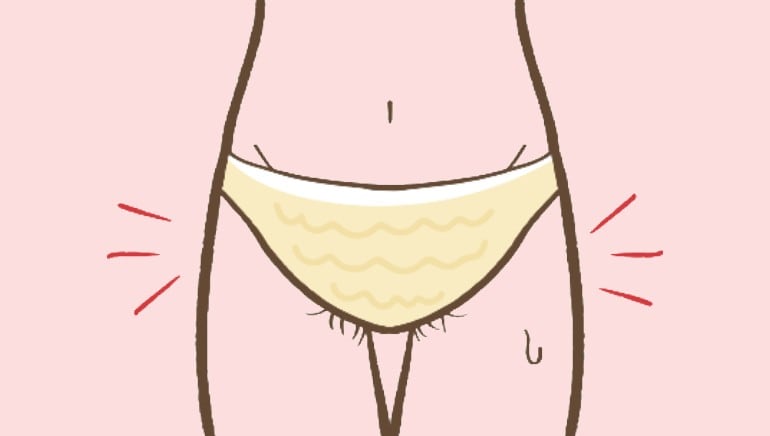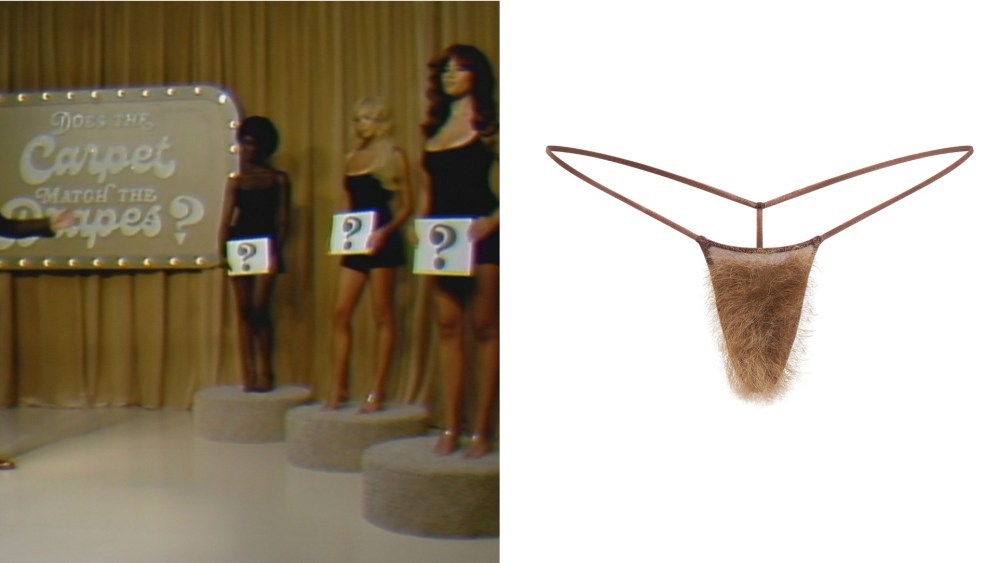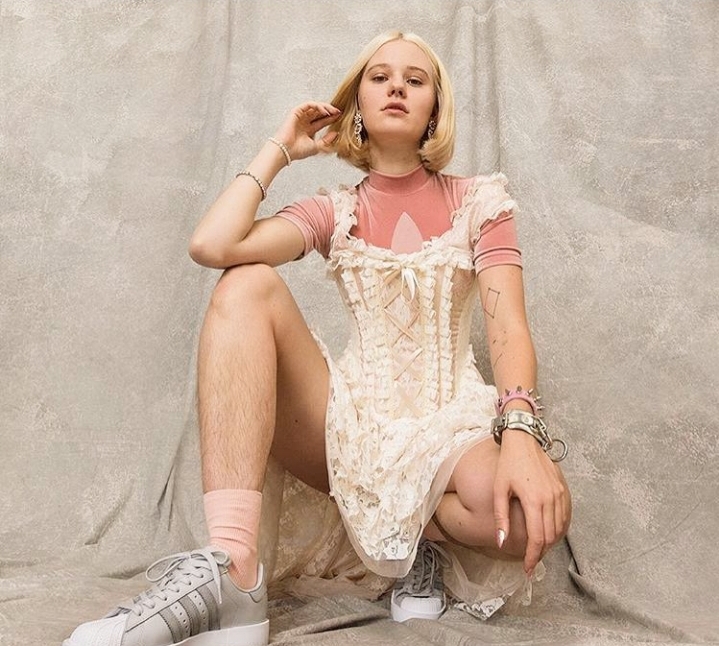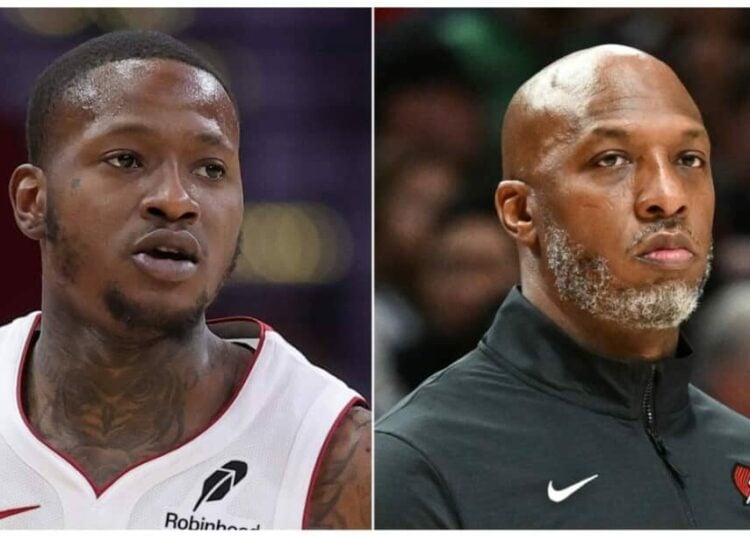Between Hygiene and Hype: The Rise of the Pubic Hair Aesthetic

Once upon not too long a time, the mark of being “clean” for women meant being hairless from the eyebrows down. Shaving, waxing, and laser removal were presented as badges of femininity and hygiene.
The unshaven body was the enemy, a sign of laziness or rebellion. Fast-forward to 2025, and fashion, in its endlessly cyclical rebellion, is flipping that script. The most unlikely emblem of style this year? Pubic hair or at least, a simulated version of it.
When Kim Kardashian’s brand, SKIMS, debuted its now infamous “Bush Thong,” the internet did what it always does best: erupted. The item. essentially a nude thong topped with faux pubic hair, was marketed as a cheeky, empowering celebration of body autonomy.
And the release struck a cultural nerve, yet again. It forced a conversation that has been lingering under the surface of beauty discourse for decades: what, really, is hygienic and who decided that being hairless meant being clean?
From Hygiene to Habit
The idea that body hair is unhygienic is surprisingly modern. In fact, for most of human history, body hair served a functional purpose: it reduced friction, protected skin, and even aided in temperature regulation.
Ancient Egyptians and Romans practiced body hair removal, but largely as a class distinction where a smooth skin was a sign of wealth and luxury. By the 20th century, however, the marketing machine got involved.
The first women’s razor, the Milady Décolleté, was launched in 1915 by Gillette, accompanied by a campaign that framed underarm hair as “unsightly and unfeminine.” Similar rhetoric spread to leg hair, and by the late 20th century, to pubic hair.
Hygiene became a marketing buzzword; to shave was to be civilized, desirable, and “fresh.” Magazines and adverts rarely questioned the connection between smoothness and cleanliness. It was simply sold as truth.
But fashion has always been a pendulum swinging between extremes, and what was once taboo inevitably becomes trend. As feminism, body positivity, and sex-positivity movements evolved, the notion of a “hygienic” body began to fracture. Enter the age of the Pubic Hair Aesthetic, a term that feels both ironic and revolutionary.

Fashion’s Hairy Provocation
Kim Kardashian’s “Bush Thong” might sound like a publicity stunt, but its cultural subtext runs deeper. For decades, Kardashian has built her empire on the perfection of the body — the sculpted waist, the smooth contour, the filtered glow.
For her brand to now embrace faux hair is both strategic and symbolic. It signals fashion’s shift toward celebrating imperfection, authenticity, and what was once censored.
This is not the first time body hair has peeked out from under the fashion curtain. In 2017, fashion photographer, Arvida Byström, modeled unshaven legs for Adidas, sparking controversy and applause in equal measure.
A bold essay titled “The Politics of Pubic Hair,” argues that women’s grooming choices had less to do with hygiene and more with social policing. And now, SKIMS, arguably one of the world’s most commercially influential brands. is commodifying that rebellion.
Some critics see it as performative feminism: selling resistance wrapped in $40 underwear. Others argue it is an important step in normalizing body diversity. But whichever side you fall on, one fact stands out: the fashion industry has turned pubic hair into a conversation, and that in itself is power.

The Cleanliness Myth
At the heart of the debate lies one persistent misconception: that pubic hair is dirty. Dermatologists, however, tell a different story. Pubic hair is not unhygienic; it is natural.
It actually protects the skin from friction and bacteria. Shaving or waxing can cause micro-cuts, ingrown hairs, and infections, hardly hygienic outcomes.
But myths about cleanliness often mask deeper cultural anxieties. Smoothness has long been associated with control, order, and femininity. Hair, in contrast, is wild, primal, and unruly, qualities that society tends to tame, especially in women.
The pressure to remove it is not really about hygiene; it is about conformity. And now that fashion is embracing what we once hid, we are being asked to rethink what “clean” even means.
In this sense, the SKIMS thong is not just underwear, it is a mirror reflecting our contradictions. We obsess over authenticity but only when it is curated.
We preach natural beauty but still filter it. We celebrate empowerment but often only when it is marketable. The bush, it seems, has become both symbol and spectacle.
Social Media and the “Body Hair Positivity” Movement
Social media has amplified this conversation into a movement. On TikTok and Instagram, the hashtag, #Bodyhairpositivity, has grown into a body-positivity subculture.
Women and some men are documenting their journeys of growing back body hair, rejecting beauty norms, and redefining self-care. Videos range from humorous (“day 35 of letting my bush live rent-free”) to deeply personal narratives about shame, choice, and liberation.
Celebrities and influencers have also joined the wave. Models like Emily Ratajkowski and Adwoa Aboah have publicly embraced natural body hair, while brands like Billie and Flamingo now use models with visible hair in their ads. The tone has shifted from “hide it” to “own it.”
Fashion, as ever, follows culture. The bush is back, branded and aestheticized, into something you can buy, wear, and hashtag. Whether that is empowerment or commodification depends on your lens. But one thing is certain: the conversation about body hair is no longer whispered behind bathroom doors.
Between Hygiene and Hype
What makes this moment fascinating is its tension between authenticity and artifice. We are celebrating naturalness, but through synthetic means.
The SKIMS thong is not real pubic hair, it is faux, curated, commercial. It lets wearers simulate rebellion without actually breaking a norm. It is both critique and commodity.
And that is where the “hype” comes in. Fashion has mastered the art of selling subversion. From “heroin chic” to “clean girl aesthetic,” trends that once began as acts of defiance are quickly packaged for profit.
The Pubic Hair Aesthetic might be no different. But even if it is hype, it still chips away at a long-standing stigma. Every headline, every shocked tweet, every viral TikTok is one step toward normalizing what used to be shameful.
In a way, the fact that we can now joke, discuss, or wear fake pubic hair in mainstream fashion says something profound about progress. It is not perfect, but it is movement.
A New Kind of Clean
Maybe “clean” was never about the absence of hair, but about comfort. The comfort in one’s choices, one’s body, one’s identity.
Whether someone chooses to wax, shave, trim, or grow freely should not hinge on outdated ideas of hygiene. And maybe, just maybe, the fashion world, with all its contradictions, is helping us arrive at that realization.
In the end, the rise of the pubic hair aesthetic is not just about underwear or trends, it is about autonomy. It is a reminder that hygiene, like fashion, has always been subjective, shaped by culture, commerce, and control.
So when you scroll past Kim Kardashian’s SKIMS “Bush Thong,” pause before laughing. It might be ridiculous, yes — but it is also revolutionary in its own cheeky way. And there is a clear message: that being clean has never required being shaven, and that beauty, once again, is daring to grow wild.
You may also like...
NBA Scandal Rocks League: Billups, Rozier Face Charges in Explosive Sports Betting Probe

Two major federal investigations have rocked the NBA, leading to the indictment and arrest of Portland Trail Blazers coa...
Streaming Wars Intensify: Netflix Exposes Paramount's Role in Industry's 'Brutal Crisis'

Netflix co-CEO Greg Peters has strongly criticized Hollywood's reliance on mergers, arguing they fail to address fundame...
DCU's Epic Future: James Gunn Taps George R. R. Martin's Lore for Major Storylines

James Gunn's DC Universe is heavily influenced by George R.R. Martin's "A Song of Ice and Fire," shaping its structure, ...
K-Pop Firestorm: LE SSERAFIM & J-Hope Unleash 'Spaghetti' Collaboration

LE SSERAFIM has released their new EP, “Spaghetti,” featuring a significant collaboration with BTS’ j-hope, marking his ...
South Africa's Legal Earthquake: Black Coffee Ruling Redefines Marriage Equality

South African actress Enhle Mbali Mlotshwa has won a landmark legal battle, with the Johannesburg High Court validating ...
Groundbreaking! Nigeria Unveils First-Ever Afrobeats Reality Show!

XL Creative Hub introduces "Battle of the Beats Season 1," Nigeria's inaugural Afrobeats production reality show, runnin...
Davido's Diplomatic Daze: Superstar Meets French President Macron!

Nigerian afrobeat superstar Davido recently met with French President Emmanuel Macron in Paris, an event he shared on hi...
Botswana Confronts Wildlife Conflict: Bold New Strategy to Protect Eco-Tourism

Botswana's Minister of Environment and Tourism, Mr Wynter Mmolotsi, announced that addressing human-wildlife conflict is...
